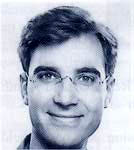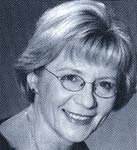|
Children's fantasies and programme design
Statements from the staff responsible
on the opportunities of involving children's fantasies in their
TV programme

Frank Beckmann
Programme Manager of KI.KA, the ARD/ZDF children's
channel, Erfurt, Germany
Fantasy is a motor, motivating kids to drive
into new worlds. These worlds belong exclusively to the kids. With
the motor of fantasy voyaging to distant planets, facing new challenges
is a child's game. Dreams become true, hopes are fulfilled, fears
are endured and overcome, heroes are born - day for day in the kids'
minds.
Our job - as adults - is to provide the energy for this motor: by
writing books, telling stories, recording radio plays, making dolls,
developing games and - of course - transmitting TV programmes. The
role of television must not be reduced to merely providing fantasies.
We provide the energy, the fuel, as it were; our task is not to
just pull the kids in tow. The stories we tell must leave sufficient
space for the kids' own fantasy. They must not be one-dimensional.
Stories without fantasy are a trip around the next corner - predictable
and boring. The whole should be aimed at opening up spaces, not
just stuffing them with furry toys, advertising slogans and interests
alien to children.
Fantasy cannot be controlled. Once the motor is switched on, off
we go - to anywhere possible - even partly beyond our own influence.
We therefore may not confront children's minds with just talking
animals, nasty monsters and super heroes. We have to put up signposts
pointing out the way, we have to convey values and fill the fantasy
worlds with good ideas.
And when good ideas have something to do with reality, this does
no harm. Reality can also be make-believe. Stories from here and
now are just as exciting as stories from remote planets, they are
also closer to children. For experiencing reality, putting oneself
into another's position, becoming acquainted with people from foreign
countries fantasy is also required.
So fill her up, please…

Firdoze Bulbulia
Chairperson, Children and Broadcasting Foundation
for Africa (CBFA), Gauteng, South Africa
Television programmes in the Apartheid South
Africa did not concern themselves with black children's issues -
fantasy or otherwise - especially when you consider the issue of
language. A broadcaster that was steeped in the Apartheid mentality
would not find a way of including black children's stories and definitely
not in their languages.
As the political milieu in South Africa began to change and producers
found a niche in children's programmes some producers began to concentrate
solely on the production of children's programmes. South Africa
began to see a sprinkling of African storytelling in a popular South
African children's programme entitled Kideo - produced by Louise
Smit Productions. Within this format a short segment involving an
African woman storyteller would begin to draw on the folk tale tradition
and entice the children to listen to the stories. Even later the
books from which the stories emerged would be brought into the studio
and the colourful drawings would become part of the presentation.
Animation in the crudest form was beginning to unfold. Now though,
more sophisticated animations have begun to be produced, and recently
even African animation with African images is seeing some light.
A notable example would be the Francophone (French and West African)
production of Kiriku - a highly sophisticated animation based on
an African folk tale.
Another type of African "fantasy" would be the BMW-African
Pen Pals, a 10-part series of 15 minutes each, portraying the lives
of one boy and one girl in each country and produced in five African
countries: South Africa, Nigeria, Tanzania, Egypt and Kenya. This
series gives audiences an opportunity to see a different Africa
- one in which children were like any other children in the world,
they lived in houses, they went to school, they had family lives
with parents and siblings, they played with their friends, they
went shopping, they participated in sports, arts, culture, and they
were not the BBC/CNN images of war-torn Africa, of bare-bottomed,
fat-bellied, running-nose African children - curious, exotic and
afraid. Rather, these are images of an Africa and its children that
are loving, ordinary, children. In the words of the Head of UNICEF,
UK: "We saw images of Africa that we have never seen before."
(Commonwealth Broadcasting Association General Assembly, Manchester
April 2002.)
In a crude way we have created a fantasy, a place where children
are clean and healthy, where there are no wars, and they are not
viewed as "other or different". So - what do we child-rights
activists, producers of children's programmes and parents from Africa
do, where some of our children struggle to find comfort in their
homes and meals for their bellies? We look for fantasy in the images
of everyday life, in the sound of the morning crow and the twilight
colours of the African skies - we find it in the smiling faces of
a child receiving food and the child going to school, in the dusk
and dawn images of the cows going out to graze and then returning
to be milked for the family meal. These images that create hope
and prosperity, that are simple and differ from the images of the
fantastical castles, or giant cream cakes, or chocolate chip factories
- no, these are comforting images of Africa, where our reality is
interwoven with our fantasy and where our children look in wonderment
at the images that are created of themselves - beautiful images
we find in documentaries like BMW-African Pen Pals or the Sesame
HIV+ puppet images of fantasy. For is fantasy not a place to escape
to, where you are comforted and supported, where there is meaning
and understanding, where there is hope and not fear - where you
know who you are - when all around is burning...?
Globalization is thus not a great fear - for how does one compete
with these images of Africa, these fantastical images that soothe
the soul and awaken the spirit? My guess is that these will become
the global images, the images for which we all will aspire, that
we will fantasize about.
(Extract from a longer article "Fantasy and the African child
- What happens when the townships are burning?")

Mary Ann Dudko, Ph.D.
Vic President, Content Development, HIT Entertainment,
Allen, TX, USA.
Barney & Friends is a live-action American
television programme that has been broadcast on PBS (Public Broadcasting
System) since 1992. It currently airs in over 100 countries worldwide.
The main character is a lovable, friendly purple dinosaur named
Barney, who comes to life from a plush toy via children's imaginations.
Barney serves as a guide or facilitator for the children to use
their imaginations to problem solve and to discover the world around
them. Barney helps teach educational concepts through pretend play,
singing songs, reciting rhymes, and playing games. He demonstrates
his love of books and reading by telling favourite children's stories
and reading good books. Barney encourages problem solving, creative
and imaginative thinking, politeness, and fair play.
Each episode emphasizes language development, physical activity,
social interactions, and music through one primary theme that is
especially geared for the preschool child. Interesting, meaningful,
and relevant topics are selected to present educational concepts
in a developmentally appropriate manner. The theme of each episode
revolves around the utilization of the child's imagination and pretend
play - critical elements in developing creative thinkers. The themes
incorporate problem-solving situations that stimulate and challenge
the development of critical thinking skills.
The cast children and Barney model positive prosocial behaviours
and the use of fantasies, or pretend play, in order to help the
viewing children learn polite behaviours, readiness skills, and
the ability to use their imaginations. The activities, such as singing,
dancing, and clapping, invite active participation by the audience.
The songs and choreography are presented in a simple repetitive
style - a key for learning for young children. At the end of each
episode, Barney concludes with a short talk directed to the viewer,
known as "Barney Says". This closure technique reinforces
and summarizes the episode's sequences as well as the educational
concepts presented.
When Barney & Friends first aired in international markets it
was often criticized as being "too American". With the
acquisition of Lyrick Studios by London-based HIT Entertainment
in February 2001, we became even more aware of global implications
for Barney. Our attempts to broaden the appeal of Barney should
be more evident with newer shows as they are broadcast. Our most
recent co-production of Barney & Friends with South Korea's
KBS is a good example of a joint effort to help Barney be more relevant
to the children of other cultures.
As Barney always says, "It's fun to use your imagination!"

Olivier Dumont
Deputy Managing Director, Saban International,
Paris, France
Incorporating child fantasies into kids'
programming is essential for our work. However, Saban International
Paris faces, in doing so, a very special task. The reason is that
we are distributing our series world-wide. This means that the stories
have to appeal to and must be understood by children all over the
world. Our series must reflect the fantasies of an American child
as well as those of a kid in Europe or a child who lives in Asia
or Latin America.
Consequently, our work requires a deep understanding of what children
think in every part of the world. And indeed, there are certain
child fantasies which are universal. The fear of loss of family
and friends, the longing for adventures, the dream of supernatural
powers to overcome the physical and mental limitations of childhood
or the need for everlasting friends are examples for fantasies which
all children have, apart from their cultural heritage.
Saban International Paris has a long-standing tradition in producing
children's programming which serves this demand. Series like Gadget
and the Gadgetinis, Princess Sissi, Diabolik or the two Michael
Ende adaptations Wunschpunsch and Jim Knopf clearly reflect this
aim.
Thus, whenever we look for a new property to adapt or create a new
concept, we always take into account, what kind of child fantasies
are being incorporated and if they suit our multi-cultural approach.

Birgit Guth
Head of Media Research and Youth Protection
Officer at Super RTL, Cologne, Germany
Children's television is a broad field where
men and women of action can romp about and let off steam. All genres
can be employed, ranging from comedy to horror series. A wide variety
of techniques are possible: animated cartoon, computer animation,
real film or a combination of the same. The choice of subject is
very free. A sound, attractive way of captivating children's interest
in a certain TV format is that of appealing to their fantasies.
At Super RTL - in the co-production sector - there are several examples
of such themes.
One of them is "Alien Worlds, Magic", which we are currently
processing in three different animated cartoon series due to go
on air in the next few years; the titles of the series are Meadowlands,
Hans Christian Andersen and Arabian Nights. Fairy tales and make-believe
worlds are filmed in these formats, a theme full of thrills for
children of all ages.
In Angela Anaconda the situation is much closer to real life, but
Angela's wittiness and her verbal competence in solving problems
are of keen interest for many children, particularly the older age
group. The wish for more self-confidence and a healthy portion of
impudence lie locked away in many children's minds. Angela demonstrates
how this works, even though she herself - like many other children
in real life - often just dreams about it.
A popular and constantly up-to-date child fantasy comes to fruition
in Typisch Andy (Typical Andy). Every child has dreamt of the perfect
prank. For Andy, the master of pranks, the great, ingenious, well-planned
and colossal prank or trick is the utmost priority.
But children's fantasies are also part and parcel of the production
of shows for the kids. The game show, which has been successful
for many years, Super Toy Club, rewards the winners with a trip
through the toyshop, where they can take along with them everything
the heart desires. What in former times was the dream of a real
Cockaigne is adapted to a modern-day shopping spree.

Susanne Müller
Head of Programming Children and Youth at
Zweites Deutsches Fernsehen (ZDF), Mainz, Germany
Have you ever attentively watched a child
at play? The child is alone - but speaks intensively with the invisible
friends surrounding it. Normally he or she should not be disturbed,
for this would harm the enchantment of fantasy. But sometimes, in
really lucky cases, explanations are given: of all those joining
the child at the table, what the people look like, what they are
eating and drinking, what they are talking about and experiencing
together. A glance at the child's soul. At times the piano bench
may turn into a noble steed, the shower head into a phone for calling
into outer space, and the bath tub into the waves of a rough ocean.
The disorder is always instructed by an invisible third person.
In the case of one of my children, the figure is called "Ina
Packet" - to this very day I have no idea why.
Every child dreams at some time or another of being rich and powerful,
a king or princess, a dragon killer or a witch - in any case someone
who really shows adults what to do with all their rules und regulations,
which make life so difficult….
Erich Kästner once wrote: "Only one who grows up and remains
a child is a human being. Don't allow your childhood to be driven
out!" At the ZDF children's editorial office we stick to this
motto. Only those who can understand children are good producers
of children's programmes. The optimal solution is when they have
preserved their child. Alternatively, they know what children think,
feel, need - simply how they tick. Because they have children, because
they know and observe children, because they remember how it was
to be a child. These ideas are then incorporated in the programme:
fairy-tale stories about talking animals, wondrous metamorphoses,
dreams coming true, make-believe stories of children saving the
world and making sure that everything turns out well in the end
- adventure stories about fighting against and conquering evil.
I am firmly convinced that only if the "child" is allowed
to let his or her imagination run free, can he or she develop into
a creative, self-confident, community-spirited person. This explains
why children's fantasies are important for the programme range.
They constitute the backdrop to all programmes, regardless of genre.
We attentively read what children write us. We listen closely to
what they want to tell us. We are inspired by their ideas and the
way they live. This is not always "politically correct",
but in my opinion it does not have to be. After all, we make the
programmes for kids - not for adults with all their misgivings.
Everything conceivable must be possible. If not, I am pessimistic
regarding the future!
INFORMATION
Internationales
Zentralinstitut
für das Jugend-
und Bildungsfernsehen
IZI
Tel.: +49 89 - 59 00 21 40
Fax.: +49 89 - 59 00 23 79
eMail: izi@brnet.de
COPYRIGHT
© Internationales Zentralinstitut für
das Jugend- und Bildungsfernsehen (IZI) 2001
|


 Publications
Publications  TELEVIZION
No. 16/2003/1
TELEVIZION
No. 16/2003/1 





